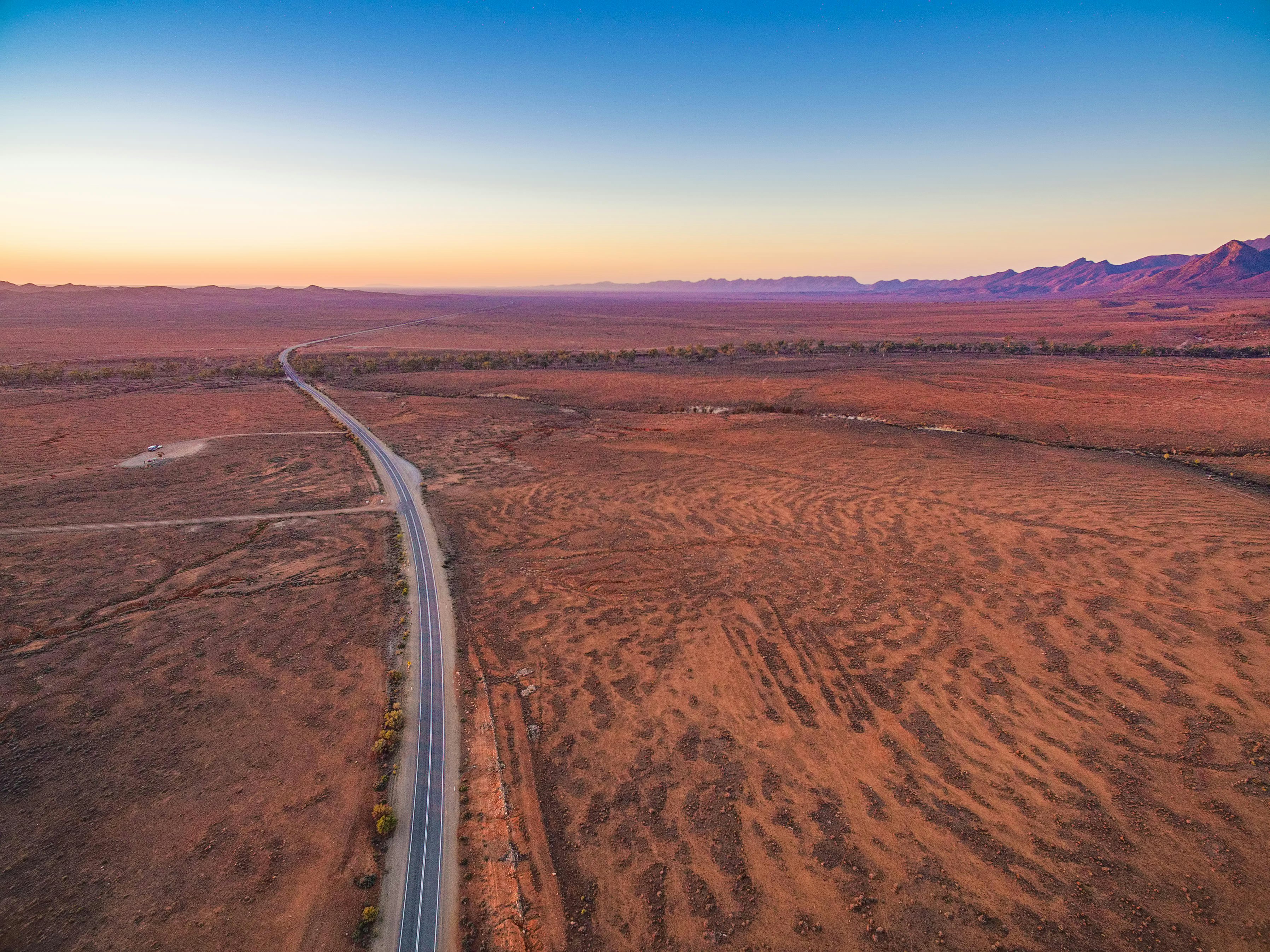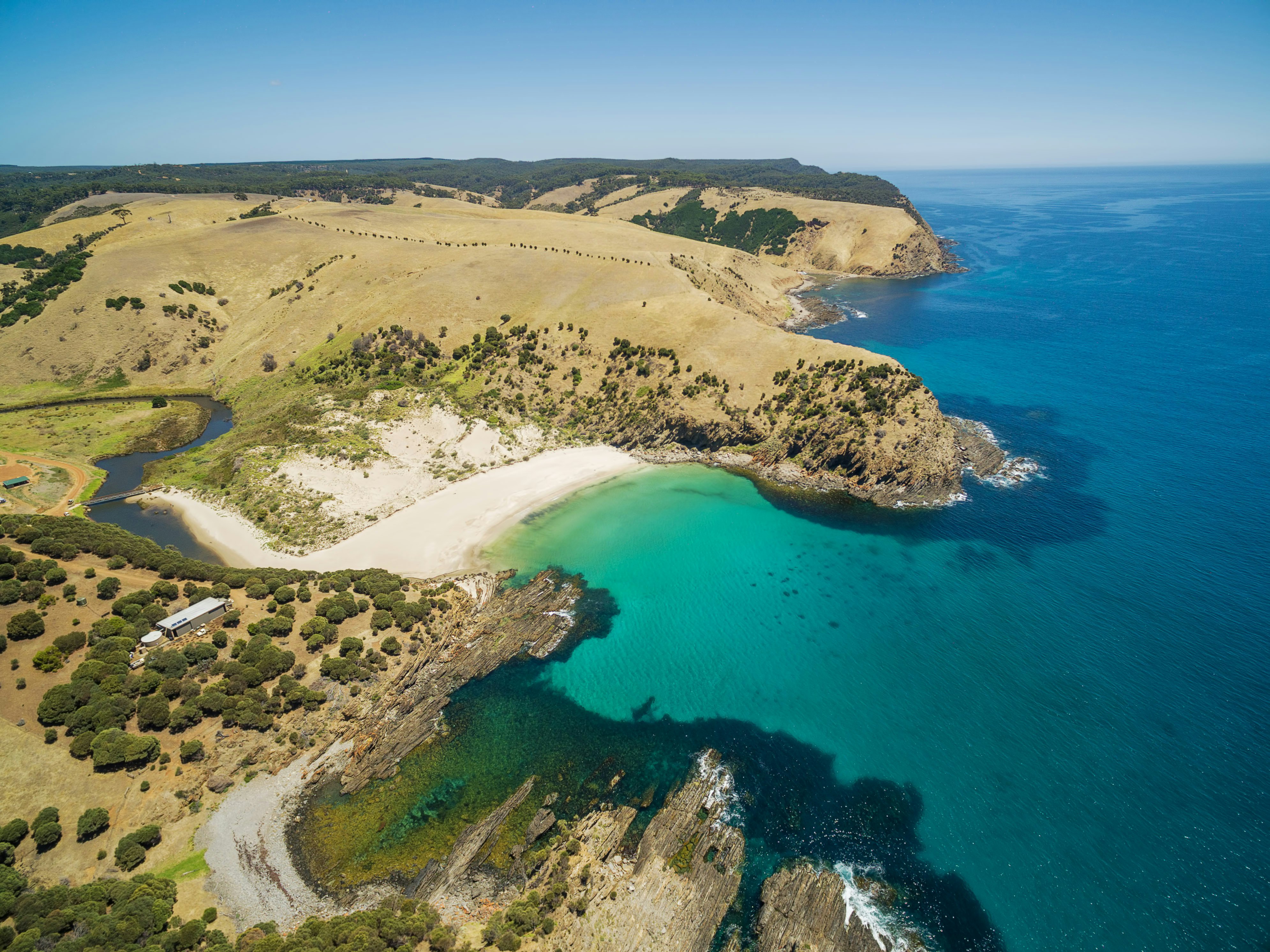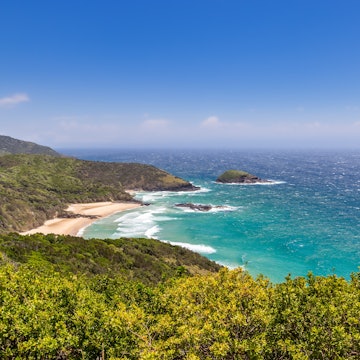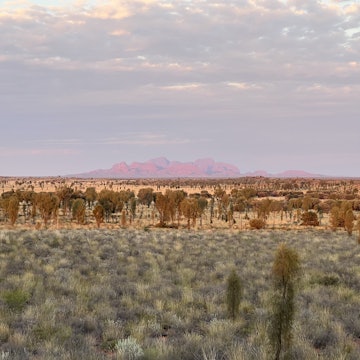

Azure seas over a rock shelf at low tide on Cape Wirrawoi, Northern Territory. Craig Ramsay / 500px
Drones have opened up a whole world of textures, compositions and jaw-dropping new perspectives on travel photography. And Australia, with its unique landscapes, is a great place to get above it all. From the red-dirt horizons in the Outback to the delicate lacework of the Great Barrier Reef visible below aquamarine waters, there are rich opportunities to capture some stunning photographs if you bring your drone down under. Having said that, there are a few drone moans, especially from locals. While it is perfectly legal to capture film and photos with a drone, you must abide by the rules – drone photography is highly regulated in Australia.

The rules for flying drones in Australia
The Civil Aviation Safety Authority (CASA) is the regulator for drone use in Australia, their DroneFlyer website explains all the rules, and breaching them can land you fines of up to $9000.
The main CASA rules for small recreational drones are:
You may only fly in daylight, and the drone must stay in your line of sight;
You must not fly in bad weather, or into a cloud;
You may only fly one drone at a time;
You may not fly over people (such as at festivals, busy beaches, streets and sporting events), or within 30m of people (unless they’re involved in flying the drone);
You may not fly over 120m (400ft);
You must stay away from emergency services, such as bushfires, police or rescue operations;
You must not fly within 5.5km of a controlled aerodrome (eg an airport), and you must land if you see an aircraft landing nearby (eg a helicopter).
These rules apply to recreational users. If you are flying for commercial gain (eg you plan to sell the photos, or make money from uploads on YouTube), you also need an aviation reference number and you need to notify CASA before you fly. In some cases, you need to be licensed and certified. See CASA for details.
Where you can fly your drone
Even before you launch, you need to find a suitable place to fly your drone. The first thing to do is download CASA’s useful app – Can I Fly There? – which helps you figure out where you can fly with location-enabled guidance covering the whole country.
But be aware that the CASA app doesn’t cover all drone restrictions in Australia, such as state-based laws on flying drones in national parks, near wildlife or in breach of people’s privacy.
Download the app and you’ll soon see that there are tight restrictions on many urban areas of Australia, if you’re allowed to fly at all (forget about getting one of those shots of the Sydney Opera House – the whole of Sydney Harbour is a no-fly zone!).
Even in wilderness areas, you’re not necessarily free to fly. Most national parks place further restrictions on drone use, for example South Australian national parks only grant permits for scientific research and commercial filming, and in NSW national parks you must obtain consent from the park manager to fly. You best bet is to check with national park staff when you enter.

Privacy considerations
There are also privacy considerations. While Australia’s national privacy laws are mostly aimed at large organisations, some states have their own privacy, trespass and anti-stalking legislation which may kick in if you breach people’s privacy, eg by taking photos of them without their consent, or flying over private property.
And while you’re at it, give wildlife some privacy too! State-based restrictions may apply, for example in NSW marine parks drones must stay 100m from a whale, dolphin or dugong.

So where can you fly a drone in Australia?
It’s true there are lots of places you can’t fly a drone in Australia. But it’s a very big country and, as long as you abide by the CASA rules, you can fly a drone and take pictures in loads of incredible locations, starting with these:
The desert – endless straight-arrow roads across the red dirt make for amazing shots.
The Great Barrier Reef – Queensland has the most permissive drone laws of any state and you are free to shoot those reef-encrusted tropical islands from above.
The 'bush' – beautiful vistas from rainforest treetops to saltbush scrub take on a whole new dimension from the air.
The beach – huge stretches of Australia’s 36,000km coastline are deserted and free from restrictions.
Lakes and rivers – the incredible pink and white landscapes of the salt lakes in the interior, as well as Australia’s many mighty rivers, plunging waterfalls and twisting billabongs, make beautiful subject matter from above.
Making the most of drone photography in Australia
As with any kind of photography, drone photography is all about the light. Australia has exceptionally harsh light in the middle of the day, so it’s better to seek out the ‘magic hour’ (actually a couple of hours) around sunset – or sunrise.
Colours are more vibrant when the sun is low, and you can get some great contrasts and long shadows. Low sun works particularly well for forest or water shots – and, well, forest and water will likely make up a large part of your subject matter in Australia.
You will probably want to shoot at other times too, so it pays to invest in some ND filters to cut out the glare in the middle of the day.

Top five tips for drone flying in Australia
Head out of town – there are far fewer restrictions on drone use outside of populated areas.
Take your done batteries in your carry-on luggage – rechargeable lithium batteries are not permitted in checked baggage on most airlines.
Take spares (such as propellers) with you – they are time-consuming to replace on the road.
Don’t record (eg photograph or film) people without their consent – it could land you in legal trouble.
Bring ND filters to cut the glare of the Australian sun!
Want some inspiration?
Check out this short selection of some of our favourite Instagram aerial travel photography accounts for more:
https://shop.lonelyplanet.com/products/australia-travel-guide-19














